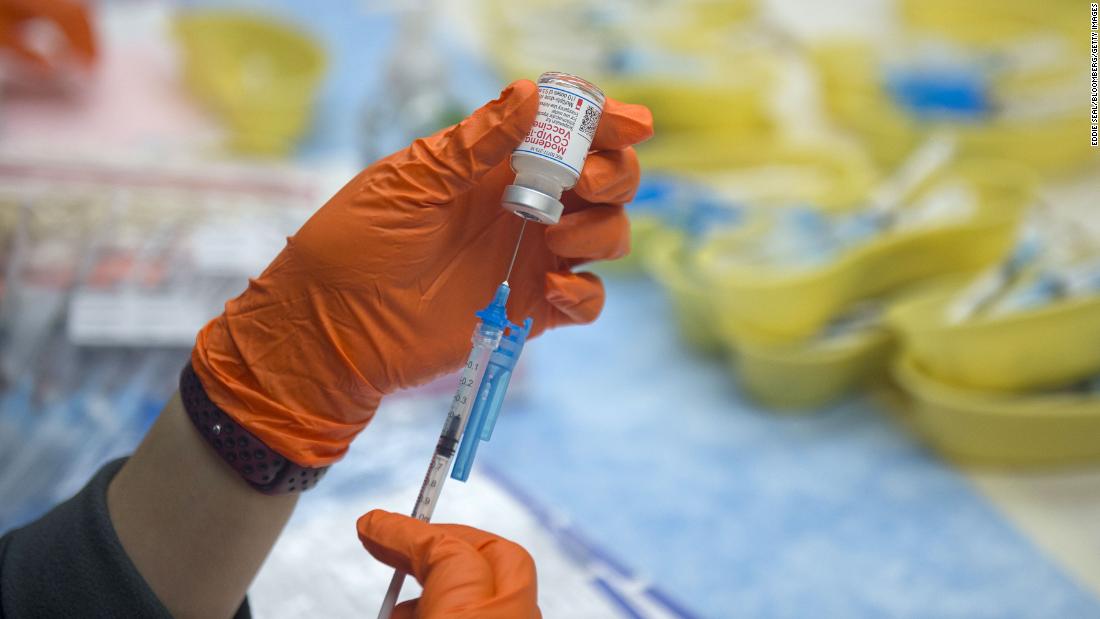Covid-19 numbers are declining
• New cases registered daily in the US are falling. Health experts warned that the holidays from November to December, with increases in travel and internal meetings, would increase cases of Covid-19.
And they soared, reaching a record pandemic average of more than 249,200 cases a day for a week on January 10, according to data from Johns Hopkins University.
The increase fell: the average dropped to about 166,380 cases a day for a week on Tuesday – a drop of more than 33% from the peak.
And the country reported less than 200,000 new cases per day for 10 consecutive days – the longest period since before Thanksgiving.
• Hospitalizations are falling: About 108,950 Covid-19 patients were in US hospitals on Tuesday – a figure generally falling since the pandemic peak of 132,474 patients recorded on January 6.
The statistic is now where it was before mid-December, according to the COVID Tracking Project.
• Reported deaths per day are hovering below a record high: The country averaged 3,349 Covid-19 deaths a day in a week on Tuesday.
This is very close to the pandemic peak average of 3,355 reached on January 13 – and far ahead of the averages of around 1,000 in mid-November alone.
Experts said the movements in the volume of deaths could be weeks behind the numbers of cases and hospitalizations, because those who succumb to the disease could be sick for weeks.
This is partly due to seasonality, said the institute’s director, Dr. Christopher Murray, on Monday – which means that a warmer climate may mean fewer opportunities for propagation, with more social opportunities outdoors.
But vaccination will also “prevent many deaths,” said Murray.
About these variants
Dr. Leana Wen, an emergency physician and former Baltimore health commissioner, is among the experts who fear that more transmissible variants could lead to more outbreaks of cases, if they occur.
“We saw what happens in other countries that actually had the coronavirus under relatively good control, so these variants took over and had an explosive spread of the virus, and then overwhelmed hospitals,” Wen told CNN on Monday.
‘Vaccinate as many people as possible’
An obvious way to combat these variants – and decrease the chances of more dangerous mutations occurring – said Fauci, is to get vaccinated.
“The best way to prevent the evolution of mutants is to suppress the amount of virus that is circulating in the population. And the best way to do that is to vaccinate as many people as quickly as possible,” Fauci told CNN on Monday. .
Evidence indicates that the vaccine-induced antibodies’ effectiveness may be diminished against the mutant seen for the first time in South Africa, but “it is still well within the protection range of being an effective vaccine,” said Fauci.
The World Health Organization, for its part, emphasized that rich countries need to do more to ensure that vaccines are available worldwide. This is not just for moral reasons, but also because dangerous mutations can arise in places where people are not vaccinated enough – and end up getting people already vaccinated sick.
“A me-first approach puts the world’s poorest and most vulnerable people at risk. It is also self-destructive,” said WHO Director-General Tedros Adhanom Ghebreyesus on Wednesday.
Keep masking, experts say
The measures that people must take to combat the variants and bring the country closer to normal while awaiting vaccines follow the now known roadmap for precautions against the pandemic, from wearing masks, avoiding crowds, to basic hand washing.
New strains put “a lot of pressure on us to try to do everything we can to decrease transmission,” said Dr. Richard Besser, former acting director of the CDC, on Tuesday.
“Vaccines are part of that, but most of that is trying to come together as a nation and see: can we make these people who are not wearing masks do this? Can we take people a social distance and avoid crowded places? ” he said
“If we can do these things, we can lessen the impact of the pandemic this winter.”
These preventive measures in conjunction with the vaccine launch – even over the course of several months – are expected to bring increasing relief, Dr. Ashish Jha, dean of the Brown University School of Public Health, told CNN late last week.
“I am hopeful that in late spring and early summer, life will start to look significantly different and better,” he said.
CNN’s Amanda Watts, Elizabeth Cohen, John Bonifield, Andrea Diaz, Maggie Fox, Naomi Thomas, Sandee LaMotte, Deidre McPhillips and Jen Christensen contributed to this report.
